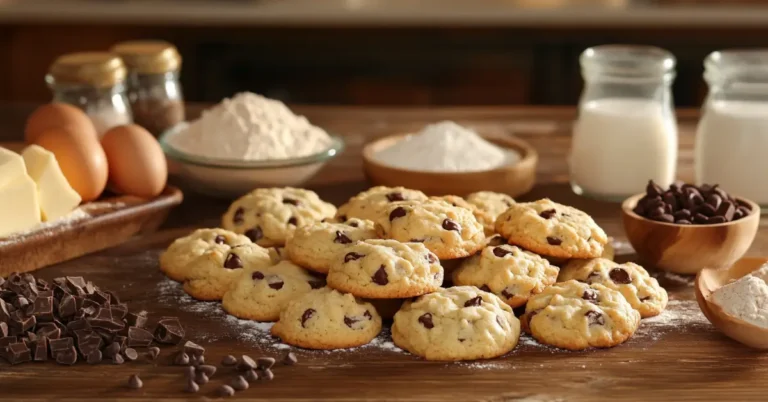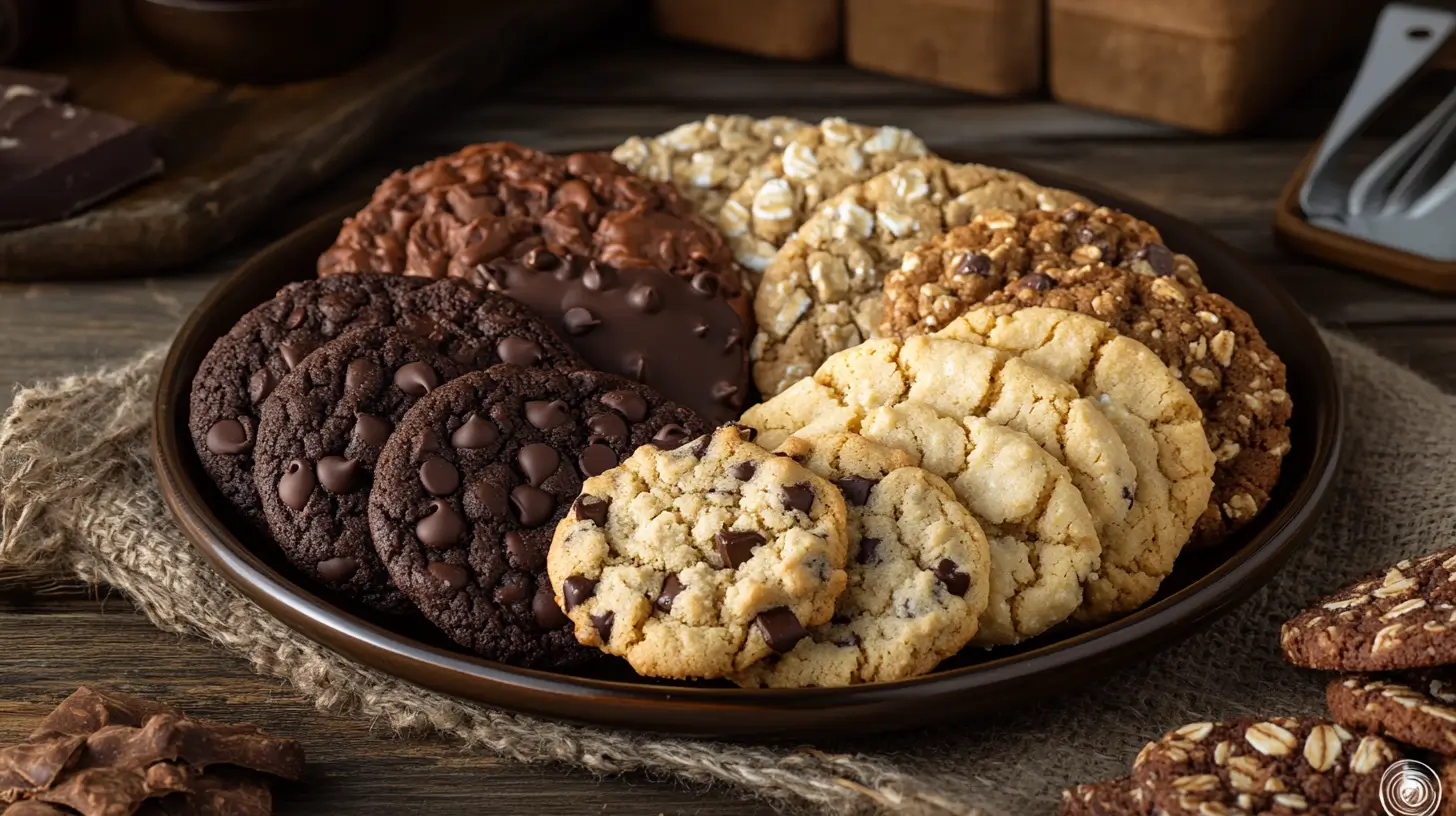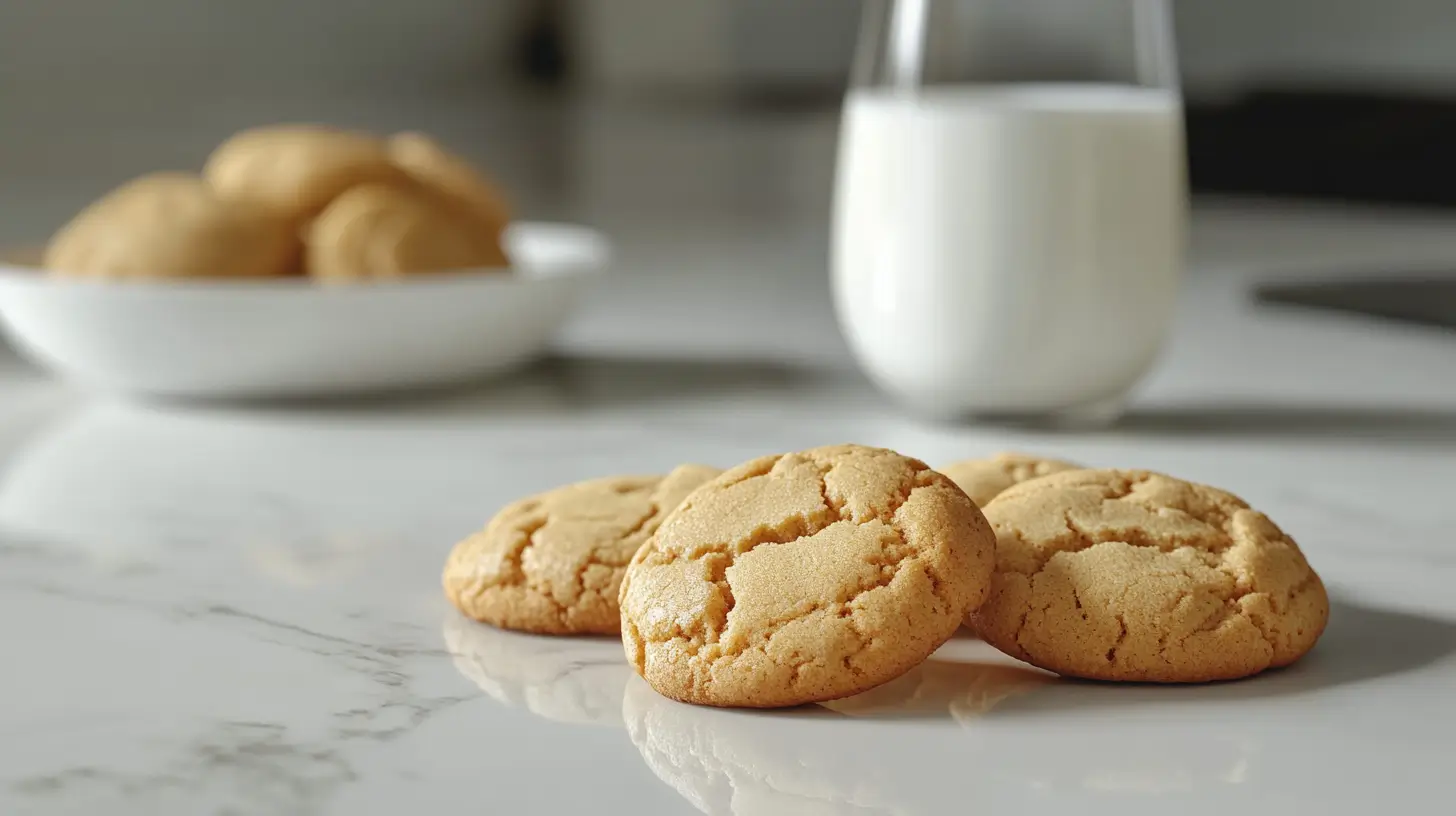Introduction
Overview of What Is the Secret Ingredient to Keep Cookies Soft
Cookies come in a variety of textures, from crispy and crunchy to soft and chewy. While everyone has their personal preference, soft cookies hold a special place in baking culture. Their melt-in-your-mouth texture and satisfying chewiness make them a favorite for many. But achieving that perfect softness requires more than just a good recipe—it calls for a deeper understanding of the ingredients and techniques involved.
Why Soft Cookies Are Essential in Baking
Soft cookies are a hallmark of comfort food, cherished across generations. They symbolize warmth, nostalgia, and indulgence, often served during holidays or special occasions. The ability to keep cookies soft is a testament to a baker’s skill, as it requires balancing flavors and textures while ensuring freshness over time. So, what is the secret ingredient to keep cookies soft, and how can bakers replicate this magic consistently? Let’s uncover the answers.
Understanding Cookie Chemistry
Key Ingredients That Explain What Is the Secret Ingredient to Keep Cookies Soft
Every ingredient in a cookie recipe plays a distinct role in determining its final texture. Flour provides structure, sugar adds sweetness, and fat contributes to tenderness. But when it comes to softness, the interactions among these ingredients become critical. Knowing what is the secret ingredient to keep cookies soft helps bakers master their craft and achieve consistent results.
How Moisture Retention Keeps Cookies Soft
Moisture is a crucial factor in keeping cookies soft. Ingredients such as eggs, butter, and sugar attract and retain water, ensuring the cookies remain tender. However, using too much liquid can result in a soggy product. Mastering the balance of moisture is essential when aiming to bake cookies with a consistently soft texture.
Baking Time’s Role in Maintaining Softness
Baking time significantly influences whether cookies turn out soft or hard. Shorter baking times help retain moisture, while overbaking causes excessive dryness. To ensure soft cookies, remove them from the oven as soon as the edges set but the centers remain slightly undercooked. This approach highlights why understanding what is the secret ingredient to keep cookies soft is vital for timing and technique.
The Secret Ingredient for Soft Cookie
What Is the Secret Ingredient to Keep Cookies Soft? A Closer Look
So, what is the secret ingredient to keep cookies soft? The answer lies in a humble kitchen staple: cornstarch. Adding a small amount of cornstarch to your cookie dough enhances tenderness and helps lock in moisture, resulting in cookies that stay soft longer.
The Science Behind the Secret Ingredient for Soft Cookies
Cornstarch works by interfering with the gluten formation in flour, reducing toughness. It also absorbs and retains water, contributing to a moist and tender crumb. This scientific process demonstrates how a seemingly simple addition can revolutionize the texture of your baked goods.
Historical and Cultural Insight into Soft Cookie Recipes
While cornstarch has been a part of baking for centuries, its use as a secret ingredient in cookies gained popularity through trial and error in home kitchens. Today, its inclusion reflects the innovative ways bakers have answered the age-old question: What is the secret ingredient to keep cookies soft?
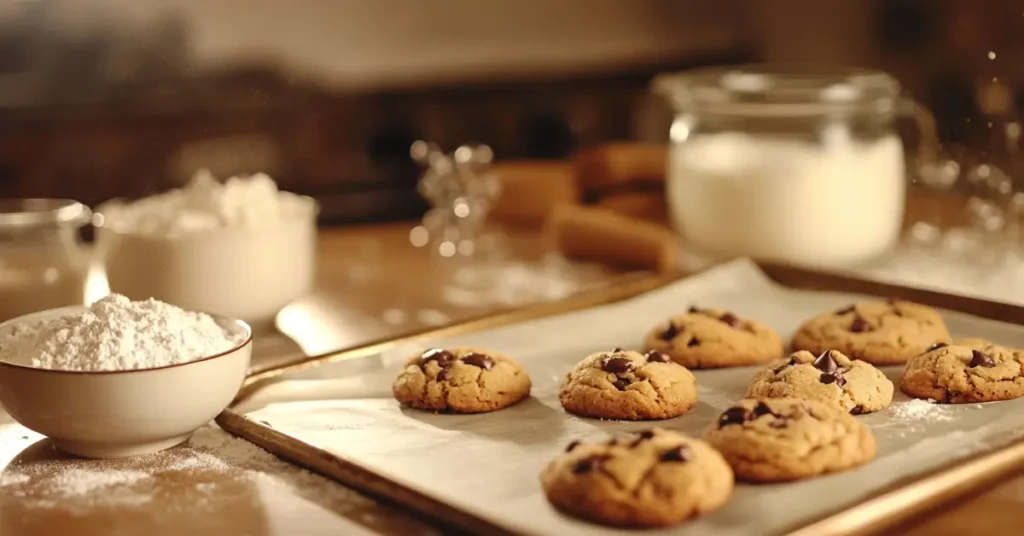
The Role of Sugar in Keeping Cookies Soft
Moisture-Rich Sugars and What Is the Secret Ingredient to Keep Cookies Soft
Sugar doesn’t just sweeten cookies—it plays a pivotal role in maintaining moisture. Certain types of sugar, like brown sugar in cookies, contain molasses, which is hygroscopic (moisture-attracting). This property helps keep cookies soft and fresh.
Comparing Brown Sugar and Granulated Sugar for Softer Cookies
When deciding between brown sugar and granulated sugar, consider their effects on texture. Brown sugar’s moisture-retaining properties make it a top choice for soft cookies, whereas granulated sugar creates a crisper texture. For the softest results, use a higher ratio of brown sugar.
The Perfect Sugar Ratio for Soft and Chewy Cookies
Balancing sugar ratios is key to achieving the perfect cookie texture. A higher proportion of brown sugar to granulated sugar yields softer cookies. This simple adjustment ties back to what is the secret ingredient to keep cookies soft, showcasing how strategic ingredient choices make all the difference.
Fat Content’s Impact on Cookie Softness
Butter vs. Shortening: What Is the Secret Ingredient to Keep Cookies Soft
The type of fat used in cookies greatly impacts their texture, just as butter vs. shortening in baking influences softness and chewiness. Butter provides richness and flavor but has a lower melting point, leading to a denser cookie. Shortening, on the other hand, creates a fluffier texture and helps cookies stay softer for longer.
Role of Fat in Cookie Structure
Fat acts as a tenderizer, coating the flour proteins and preventing excessive gluten formation. This creates a softer, more delicate crumb, addressing the question: What is the secret ingredient to keep cookies soft?
Balancing Fats to Achieve the Best Texture
A combination of butter and shortening often produces the best results. Butter adds flavor, while shortening enhances softness. Adjusting the ratio allows bakers to customize their cookies’ texture while keeping them irresistibly tender.
Using Eggs to Keep Cookies Soft
How Whole Eggs and Yolks Affect Cookie Softness
The purpose of eggs in cookies is to contribute both moisture and structure to cookies. While whole eggs add firmness, using just the yolks creates a richer, softer texture. This technique underscores the importance of understanding what is the secret ingredient to keep cookies soft.
How Eggs Contribute to Moisture
Eggs are natural emulsifiers, blending fats and liquids seamlessly. Their water content ensures the dough stays moist, which translates to softer cookies post-baking.
Adjusting Eggs to Answer What Is the Secret Ingredient to Keep Cookies Soft
To achieve softer cookies, consider reducing the egg whites slightly and increasing the yolks. This modification enhances richness and moisture, highlighting the role of eggs in solving the mystery of what is the secret ingredient to keep cookies soft.
Flour Selection for Soft Cookies
Protein Content’s Role in What Is the Secret Ingredient to Keep Cookies Soft
Choosing the right flour for cookies directly affects their texture, impacting whether they turn out soft or chewy. High-protein flours like bread flour yield chewier cookies, while low-protein options like cake flour result in a softer texture.
All-Purpose vs. Cake Flour for Soft and Chewy Cookies
For soft cookies, consider substituting some all-purpose flour with cake flour. The lower protein content reduces gluten development, ensuring a tender crumb.
How Flour Type Affects Chewiness
Flour choice is pivotal in determining texture. Understanding its role answers the query: What is the secret ingredient to keep cookies soft, helping bakers refine their ingredient selection.
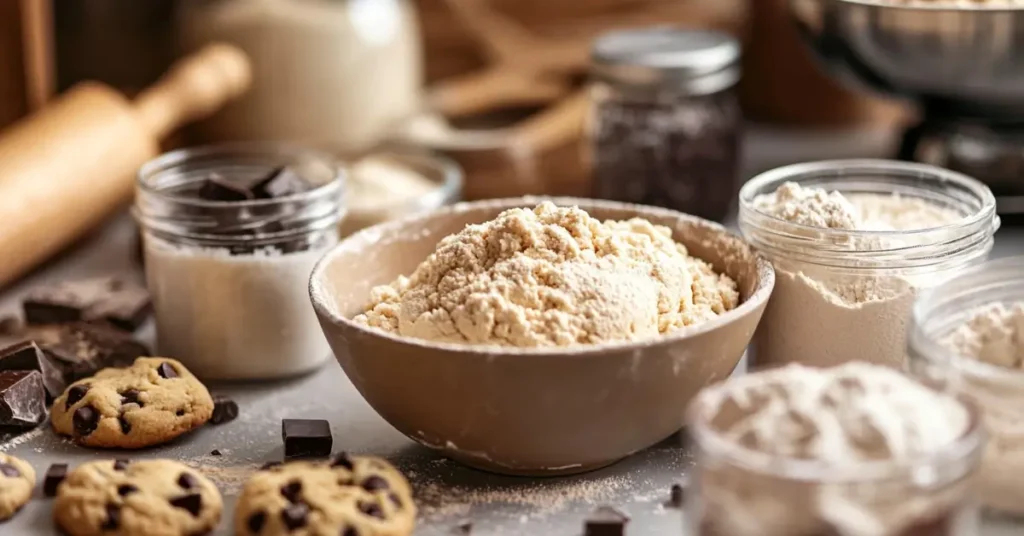
Adding Dairy Products
Milk, Cream, and Yogurt
Dairy products such as milk, cream, and yogurt are excellent additions for soft cookies. They introduce moisture and fat, both of which are essential for tenderness.
Enhancing Tenderness with Dairy
The proteins and fats in dairy bind with the dough, creating a smoother and softer texture. This method aligns with discovering what is the secret ingredient to keep cookies soft.
Balancing Flavors
While dairy products improve texture, they also enhance flavor. Yogurt adds a slight tang, while milk and cream bring richness. Striking the right balance ensures that cookies remain soft and flavorful.
Soft cookies are a timeless treat, and achieving the perfect texture requires understanding the interplay of ingredients and techniques. With cornstarch as the secret ingredient, along with careful attention to sugar, fat, eggs, flour, and dairy, bakers can create cookies that are not only soft but also utterly delicious.
Secret Ingredient Spotlight: Cornstarch
How Cornstarch Keeps Cookies Soft
Cornstarch plays a pivotal role in achieving perfectly soft cookies. Its unique properties allow it to interfere with gluten formation, which reduces toughness in the dough. This results in a more tender texture that is key to keeping cookies soft. Additionally, cornstarch acts as a moisture-retaining agent, ensuring that cookies stay fresh for longer. Understanding what is the secret ingredient to keep cookies soft reveals how this simple ingredient makes a significant difference.
Methods for Incorporating Cornstarch
Cornstarch is easy to incorporate into cookie dough. Simply add 1–2 teaspoons per cup of flour in your recipe. Alternatively, you can replace a small portion of the flour with cornstarch to achieve a similar effect. Mixing it evenly into the dry ingredients ensures it works seamlessly to enhance softness.
Common Recipes Using Cornstarch
Cornstarch is often used in recipes like shortbread, sugar cookies, and thumbprint cookies. These treats rely on a tender, melt-in-your-mouth texture, which cornstarch helps to deliver. By incorporating this ingredient, bakers can confidently address what is the secret ingredient to keep cookies soft in various recipes.
The Role of Liquid Ingredients
Balancing Water or Milk
Liquids such as water or milk are critical in achieving soft cookies. They hydrate the flour and bind other ingredients, contributing to a dough that is pliable and moist. However, adding too much liquid can result in sticky dough that’s difficult to work with, so balance is essential.
Preventing Overhydration
Overhydration can lead to cookies that spread too much during baking, resulting in a thinner, less soft texture. Measuring liquids precisely and adjusting based on the dough’s consistency ensures optimal hydration while addressing what is the secret ingredient to keep cookies soft.
How Liquid Aids in Softness
Liquids prevent the dough from drying out and contribute to steam formation during baking. This helps the cookies maintain a tender interior. Milk, in particular, also adds a slight richness that enhances flavor alongside texture.
Proper Mixing Techniques
Avoiding Overmixing
Overmixing cookie dough can develop too much gluten, leading to cookies that are tough instead of soft. To avoid this, mix just until the ingredients are combined. This preserves the dough’s delicate structure, helping to answer what is the secret ingredient to keep cookies soft.
Achieving Even Ingredient Distribution
Proper mixing ensures all ingredients are evenly distributed, so the cookies bake uniformly. Uneven mixing can lead to inconsistent textures, with some cookies turning out soft and others dry or crumbly.
How Mixing Affects Texture
Mixing directly influences the cookie’s crumb. Gentle mixing results in a tender texture, while aggressive handling can create a denser product. Perfecting this step is key to maintaining the softness of your cookies.
Chilling Dough for Success
Why Chilling Helps with Softness
Chilling cookie dough allows the fats to solidify, preventing cookies from spreading too much during baking. It also gives the dry ingredients more time to absorb the liquid, resulting in a tender and flavorful final product. This technique aligns with the goal of discovering what is the secret ingredient to keep cookies soft.
Best Practices for Dough Refrigeration
For best results, wrap the dough tightly in plastic wrap or store it in an airtight container before refrigeration. This prevents it from drying out and ensures consistent texture throughout.
How Long to Chill Dough for Optimal Results
Chill cookie dough for at least 30 minutes, but up to 24 hours for enhanced flavor and texture. Extended chilling time allows the ingredients to meld together, producing softer cookies with a rich depth of flavor.
Optimal Baking Conditions
Choosing the Right Oven Temperature
Baking cookies at the correct temperature is essential for maintaining softness. A range of 325°F to 350°F is ideal for most recipes, as it allows the cookies to bake through without drying out.
Using Parchment Paper for Even Baking
Parchment paper ensures even heat distribution and prevents cookies from sticking to the baking sheet. This small adjustment can significantly improve texture, supporting the quest to identify what is the secret ingredient to keep cookies soft.
Avoiding Overbaking for Softness
Overbaking is one of the quickest ways to lose softness in cookies. Remove them from the oven as soon as the edges are set but the centers are slightly underdone. They will continue to bake on the hot sheet, resulting in perfectly soft cookies.
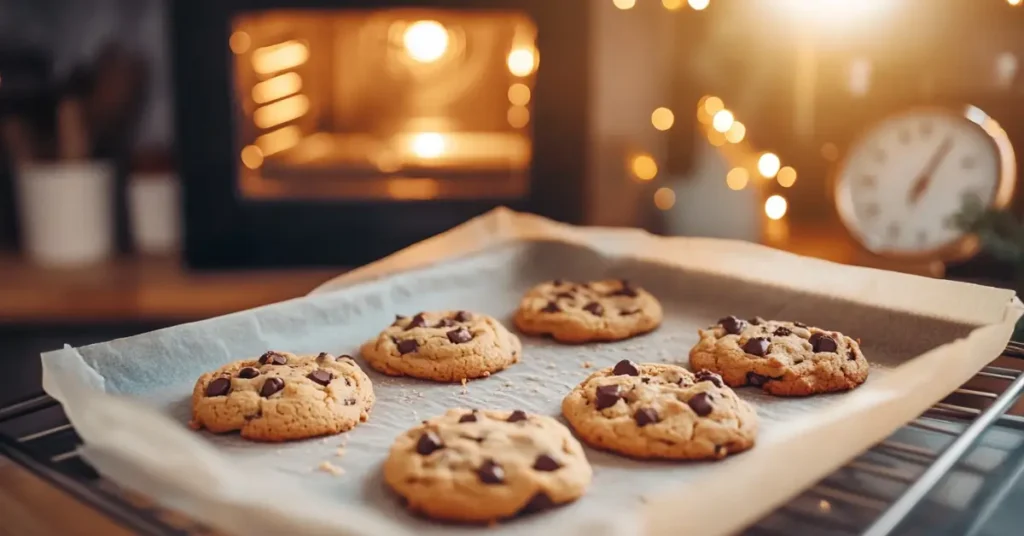
Storing Soft Cookies
Best Storage Practices
To keep cookies soft after baking, proper storage is essential. Allow cookies to cool completely before transferring them to an airtight container. This helps retain their moisture and prevents them from becoming stale.
Use of Airtight Containers
Airtight containers are the best option for preserving the softness of cookies. Place parchment paper between layers to prevent sticking and maintain texture. This method directly supports the principles behind what is the secret ingredient to keep cookies soft.
Adding Bread Slices for Moisture Retention
Placing a slice of bread in the container with your cookies helps maintain their softness. The bread absorbs excess air moisture, preventing the cookies from drying out and extending their freshness.
FAQs
What is the trick to making soft cookies?
The trick to making soft cookies lies in balancing moisture, fat, and baking techniques. Incorporate ingredients like brown sugar, which retains more moisture, and use cornstarch to create a tender texture. Avoid overbaking by removing cookies from the oven while their centers are still slightly undercooked; they will firm up as they cool. Additionally, chilling the dough before baking helps prevent excessive spreading, ensuring a soft and thick final texture.
How do you keep cookies from getting hard after baking?
To keep cookies soft after baking, store them properly. Allow them to cool completely, then place them in an airtight container to lock in moisture. Adding a slice of bread to the container can also help maintain softness by absorbing excess air moisture. Avoid exposing cookies to open air for prolonged periods, as this can dry them out. Proper storage techniques ensure your cookies stay soft and fresh for days.
What ingredient makes cookies softer?
The key ingredient for making cookies softer is cornstarch, but understanding how eggs affect cookies also plays a crucial role in texture. It interferes with gluten development, resulting in a tender and soft texture. Brown sugar also contributes to softness due to its higher moisture content, while ingredients like butter and eggs help retain moisture in the dough. Adjusting the ratio of these ingredients ensures consistently soft cookies.
What makes cookies chewy and not hard?
Chewy cookies are the result of higher moisture content and careful ingredient ratios. Using more brown sugar than granulated sugar ensures a moist texture, while incorporating egg yolks adds richness and chewiness. Selecting low-protein flour like cake flour and chilling the dough also help create a dense, chewy texture. Avoid overbaking, as this can dry out the cookies and make them hard instead of chewy.
Conclusion
Recap of Key Points
Achieving and maintaining soft cookies involves understanding ingredient interactions, proper techniques, and thoughtful storage. Cornstarch, liquids, and precise mixing all contribute to the desired texture, while chilling dough and careful baking ensure optimal results.
Encouragement to Experiment
Now that you know what is the secret ingredient to keep cookies soft, it’s time to experiment in the kitchen. Try different combinations of ingredients and techniques to create cookies that are irresistibly soft, tender, and delicious.

